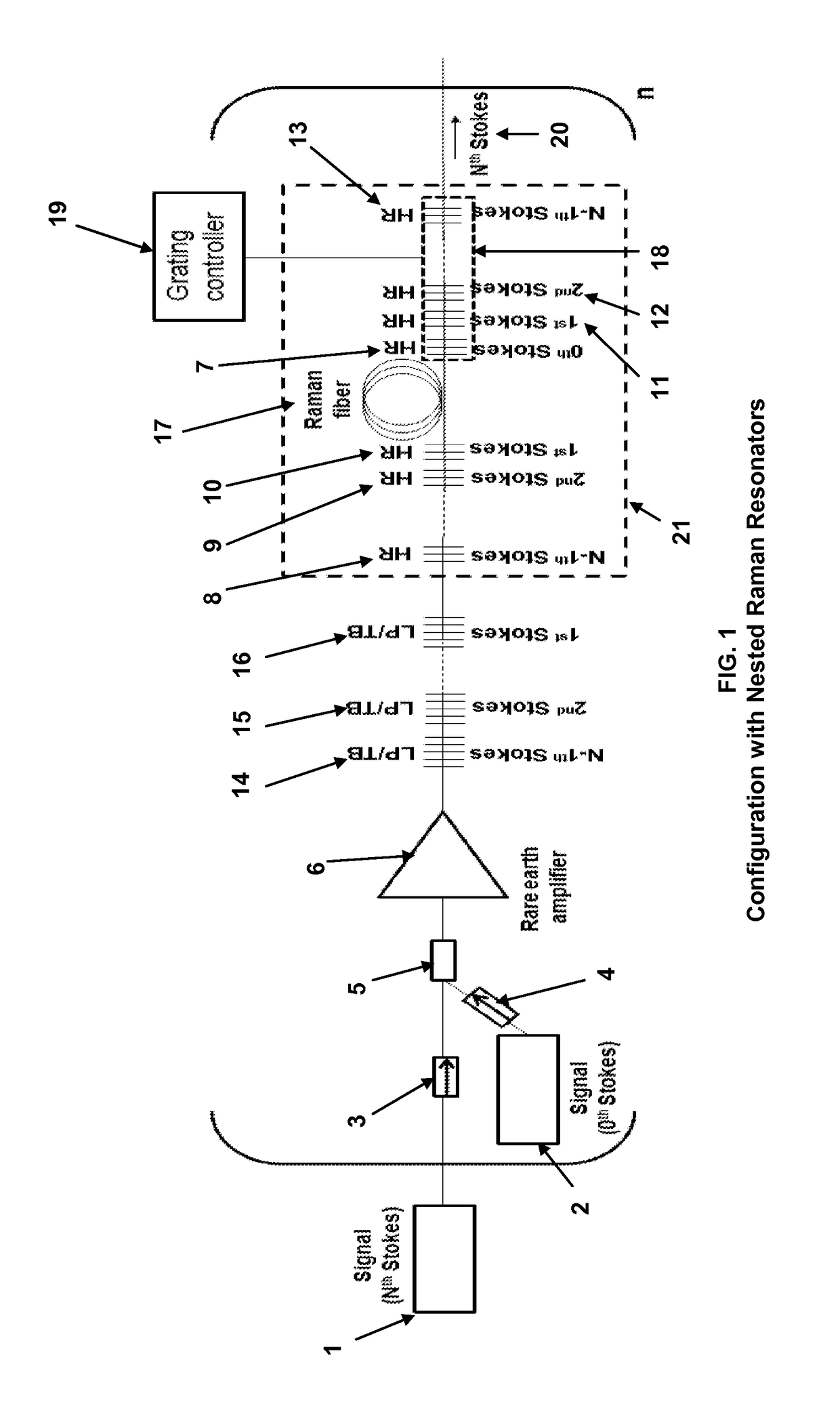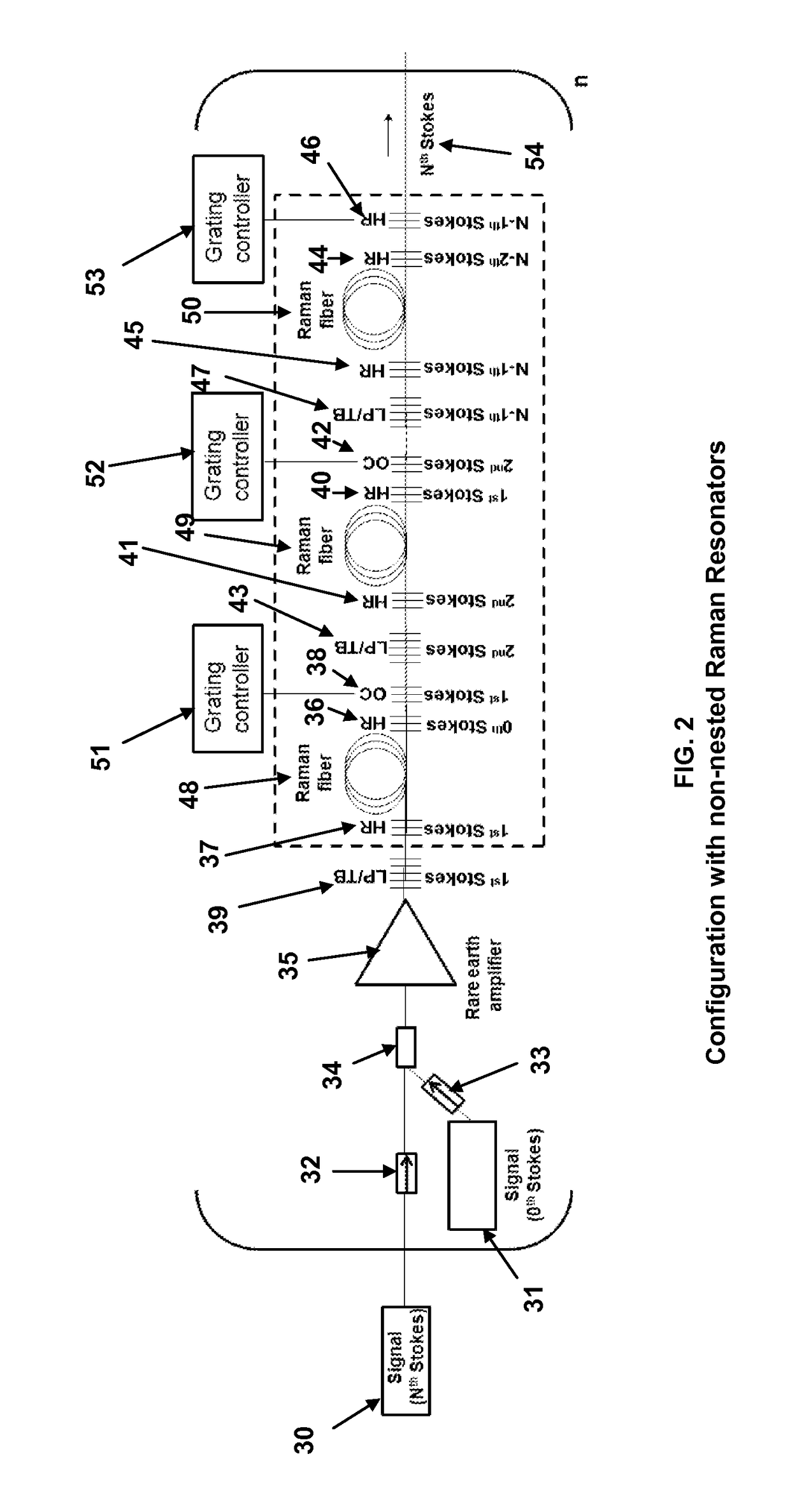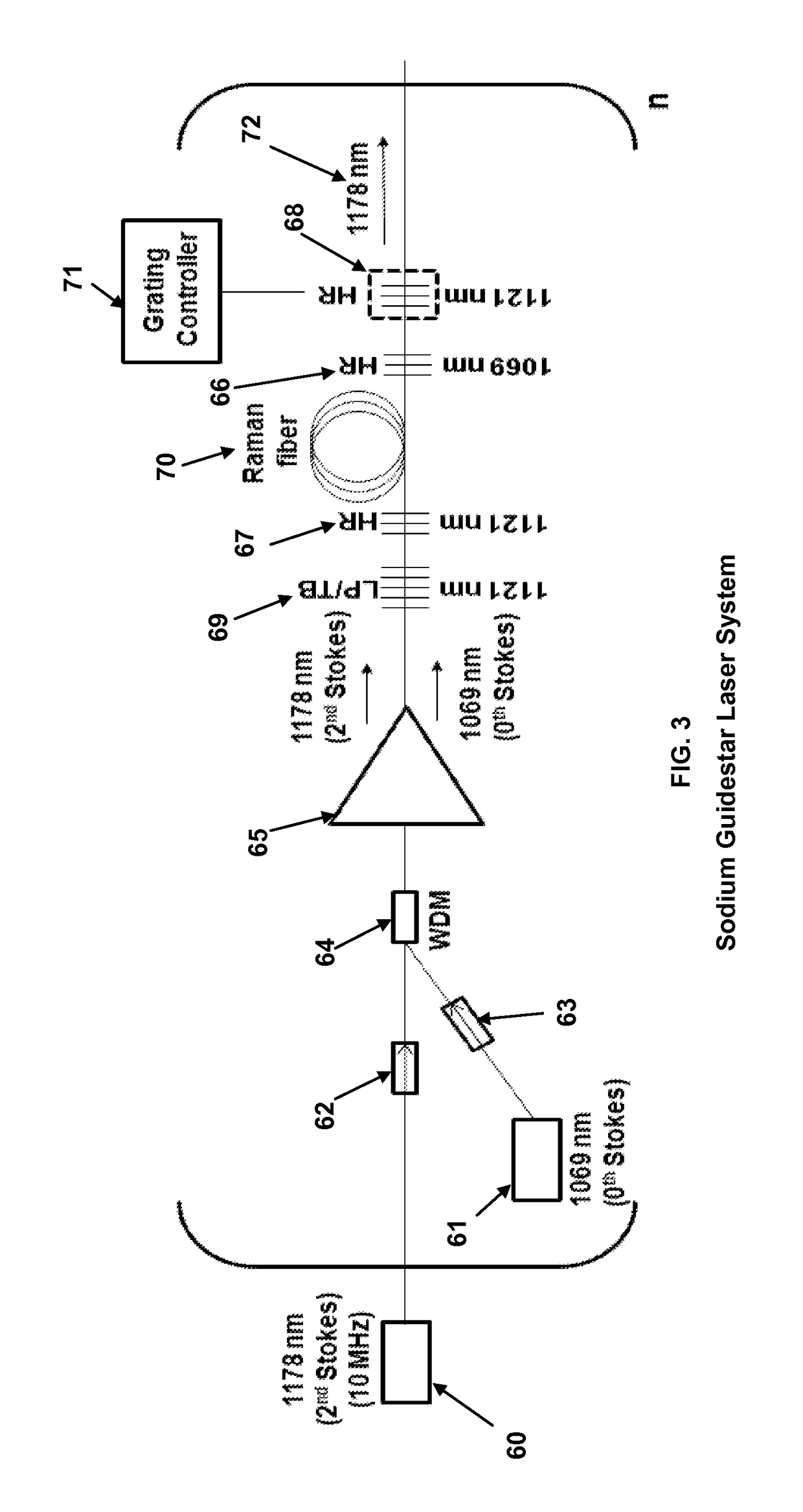Seeded raman amplifier for applications in the 1100-1500 nm spectral region
- Summary
- Abstract
- Description
- Claims
- Application Information
AI Technical Summary
Benefits of technology
Problems solved by technology
Method used
Image
Examples
Embodiment Construction
[0031]The two generic embodiments representing the extremes of Raman resonator configurations for the invention described in this patent are described. One embodiment consists of a rare earth doped fiber amplifier spliced to a Raman resonator configuration that is fully nested. The other embodiment consists of a rare earth doped fiber amplifier spliced to a completely linear, unnested, Raman resonator configuration. Anyone skilled in the art will realize that other configurations lying between these two extremes are possible.
Nested Raman Resonator Embodiment
[0032]A block diagram of the fully nested Raman resonator embodiment is shown in FIG. 1. The first device in the diagram is a seed source 1 tuned to the desired output wavelength, the Nth order Stokes line. It may be created in a number of ways to include frequency doubling of a source at a longer wavelength. This device needs to have the linewidth desired of the output. Another device in the diagram is a seed source 2 tuned to t...
PUM
 Login to View More
Login to View More Abstract
Description
Claims
Application Information
 Login to View More
Login to View More - R&D
- Intellectual Property
- Life Sciences
- Materials
- Tech Scout
- Unparalleled Data Quality
- Higher Quality Content
- 60% Fewer Hallucinations
Browse by: Latest US Patents, China's latest patents, Technical Efficacy Thesaurus, Application Domain, Technology Topic, Popular Technical Reports.
© 2025 PatSnap. All rights reserved.Legal|Privacy policy|Modern Slavery Act Transparency Statement|Sitemap|About US| Contact US: help@patsnap.com



